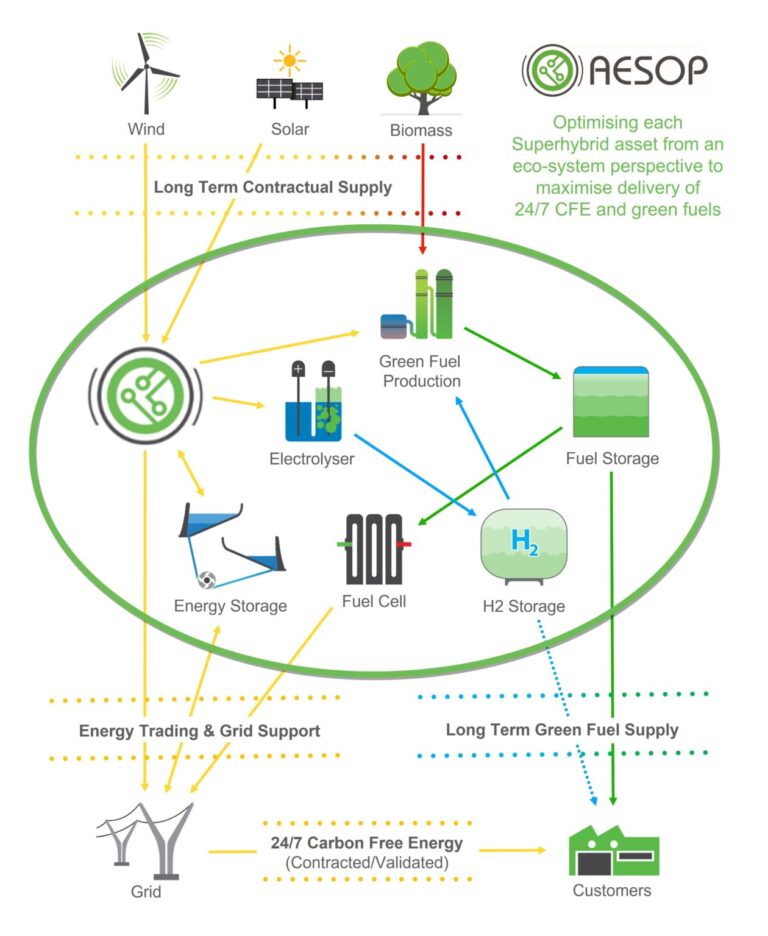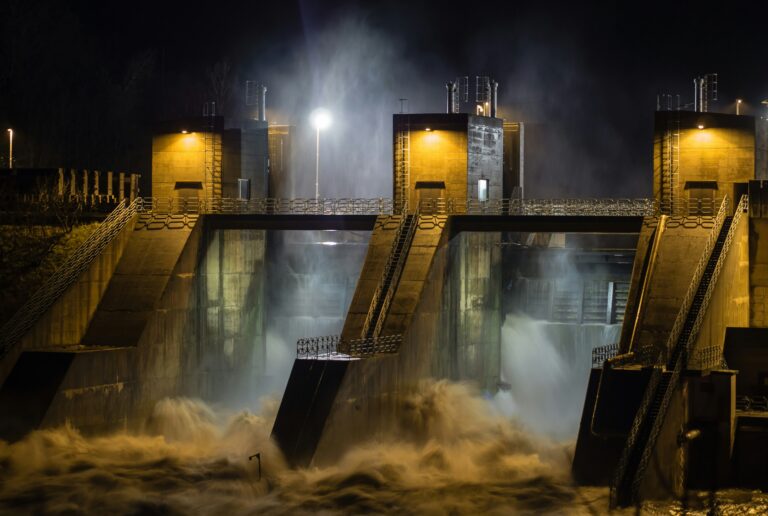Pumped hydro has long been recognised as the linchpin of reliable, long-duration energy storage. As renewables dominate new energy investment and the grid becomes more variable, pumped hydro—especially when integrated with green fuels production—is emerging as a game-changing solution. But most policy and industry frameworks treat this as a future opportunity.
This paper argues that the future has arrived.
Through real-world demonstration, multi-sectoral investment, and deep integration of renewables, Sunshine Hydro’s Superhybrid™ model proves that the tools, technology, and economics for viable pumped hydro projects are already operational. This paper contrasts this evidence with ongoing narratives that frame pumped hydro as too risky, too far away, or too expensive to scale. The result is a call to reframe how the sector—and policymakers—think about enabling investment.
The Urgency: Why Pumped Hydro Matters Now
At COP28, global leaders committed to tripling renewables by 2030. Wind and solar, while abundant, create volatility in the energy system. Pumped hydro is the only proven, mature technology for long-duration storage that can operate at grid scale.
When combined with green fuels production and managed through an integrated system, pumped hydro delivers flexible, firmed power. Yet, traditional pumped hydro and green fuels planning are often separated, limiting system-wide optimisation.
The Superhybrid model integrates these elements—pumped hydro, renewables, green fuels production, and orchestration software—into a unified renewable ecosystem that can:
- Balance supply and demand in real-time
- Provide continuous, firmed renewable energy (24/7 CFE)
- Reduce green fuel production costs through operational efficiency
- Unlock multiple revenue streams for investors and communities
Debunking the Risk Myth: The Investment Case is Already Validated
Recent international guidance on enabling pumped hydro, including IHA’s 2024 “De-Risking Pumped Storage Hydropower” note, highlights two common investor hesitations: the failure of projects to reach Final Investment Decision (FID), and the lack of reliable cost forecasts.
Sunshine Hydro’s project pipeline—especially the flagship Djandori Gung-i site—demonstrates that these challenges are not structural to the technology, but rather to outdated project design and siloed thinking.
Key de-risking achievements:
- Community equity participation: Djandori Gung-i includes a 20% equity option for First Nations stakeholders.
- Multi-party MOUs: Partnerships with Zen Energy and CQUniversity strengthen supply assurance and research capability.
- Technology confidence: The use of ultra-efficient electrolysers by Hysata reduces green fuel production costs by 40%.
- Investor traction: Three successful crowd-equity campaigns show strong retail investor confidence.
The lesson is clear: when projects are designed as ecosystems rather than standalone assets, risk is distributed, value is diversified, and commercial confidence grows.
AESOP: Solving the Coordination Problem
The most overlooked challenge in energy transition is orchestration—matching demand, generation, and storage across a volatile grid. Sunshine Hydro’s proprietary AESOP software (Advanced Energy Storage Optimisation Program) solves this.
AESOP is the “brain” of the Superhybrid system, conducting renewable inputs and storage assets like a symphony. With five-minute forecast granularity, AESOP:
- Allocates energy across production and storage in real time
- Optimises green fuels production and grid sales for profit and grid stability
- Enables digital twin simulations for investor and engineering modelling
- Facilitates real-time contract fulfilment and risk mitigation
With AESOP, pumped hydro projects become not only technically feasible, but financially resilient and predictable.
Green Fuel Economics: The 40% Tipping Point
Until recently, green fuels’ primary challenge was cost. But with the inclusion of Hysata’s electrolyser technology into Sunshine Hydro’s modelling, this hurdle is now being cleared.
Hysata’s capillary-fed electrolysers operate at 95% efficiency compared to conventional systems, and when integrated within a Superhybrid framework that leverages pumped hydro’s flexible storage profile, Sunshine Hydro has modelled:
- A 40% reduction in cost per kg of green fuels
- Higher asset utilisation of both electrolyser and pumped hydro infrastructure
- Reduced curtailment of renewable energy generation
This is not just an incremental improvement—it’s a categorical shift in economic viability.
Policy Lag: The Real Bottleneck
The irony is that while technology has advanced, regulatory and financial frameworks still operate under assumptions that pumped hydro is “in development.”
As a result:
- Permitting timelines remain geared toward single-purpose infrastructure
- Financial incentives often reward discrete assets rather than integrated systems
- Green fuel credits are skewed toward headline capacity, not operational alignment with renewables
This disconnect can be fatal to progress. Projects like Djandori Gung-i prove that pumped hydro is not a concept, but a tested and advancing reality. The challenge is no longer to prove viability—but to build policy and procurement systems that support what already works.
Australia’s Opportunity: Not Just To Catch Up—But To Lead
Sunshine Hydro’s Superhybrid model isn’t just a domestic prototype. It’s a global blueprint. Australia has the geography, the renewable abundance, and now, the demonstrated technical and commercial model to lead in pumped hydro.
By scaling to 10 projects by 2030 and 100 by 2040, Sunshine Hydro envisions a network of long-duration storage hubs that:
- Enable export-scale green fuel production
- Support decarbonisation of heavy industry
- Ensure true 24/7 clean electricity for urban and rural Australia
- Generate intergenerational wealth for First Nations and regional communities
With active partnerships, proven software, and community-aligned governance, the only remaining step is alignment at the policy and infrastructure funding level.
Conclusion: From Possible to Inevitable
Sunshine Hydro’s work shows that we don’t need to wait for breakthroughs or subsidies. The path to commercially viable, technically reliable, and socially equitable pumped hydro is already here.
All it requires is recognition.
Regulators, investors, and energy agencies must now shift their frameworks from “risk mitigation” to “deployment acceleration.” The question is no longer can we do this—but how fast can we scale.
Sunshine Hydro is ready. The market is ready. The economics are ready.
It’s time the conversation caught up.



